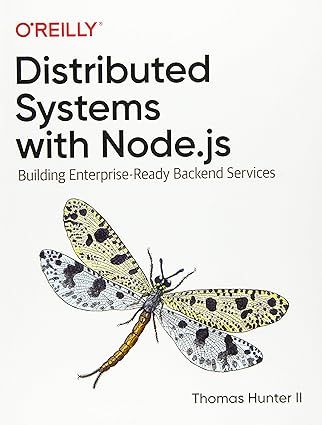Distributed Systems with Node.js: Building Enterprise-Ready Backend Services
Introduction
Node.js has emerged as a powerful platform for building scalable and high-performance web applications. Its event-driven, non-blocking I/O model makes it particularly well-suited for distributed systems. This white paper explores the key concepts, technologies, and best practices for building enterprise-ready backend services with Node.js.
Core Concepts
- Microservices Architecture:
- Breaking down applications into smaller, independent services.
- Benefits: scalability, flexibility, and fault tolerance.
- Service Discovery:
- Mechanisms for services to discover and communicate with each other.
- Technologies: Consul, Eureka, and ZooKeeper.
- API Gateways:
- Centralized entry point for all client requests.
- Routing, rate limiting, authentication, and security.
- Technologies: Kong, Apigee, and Tyk.
- Message Queues:
- Asynchronous communication between services.
- Technologies: RabbitMQ, Kafka, and Redis.
- Distributed Caching:
- Improving performance and reducing database load.
- Technologies: Redis, Memcached.
Building Blocks
- Node.js Frameworks:
- Express.js: A popular framework for building web applications.
- Koa.js: A minimalist framework for building web applications and APIs.
- Hapi.js: A framework for building high-performance web applications and services.
- Database Technologies:
- MongoDB: A NoSQL database for flexible data modeling.
- PostgreSQL: A powerful relational database for structured data.
- Redis: An in-memory data store for caching and messaging.
- Testing and Debugging:
- Unit testing with Jest or Mocha.
- Integration testing with tools like Supertest.
- Debugging with Node.js Inspector or Chrome DevTools.
Best Practices
- Asynchronous Programming:
- Using callbacks, promises, or async/await for non-blocking operations.
- Error Handling:
- Implementing robust error handling mechanisms.
- Using try-catch blocks and error-first callbacks.
- Performance Optimization:
- Profiling and optimizing code for performance.
- Using asynchronous operations and efficient data structures.
- Security:
- Protecting against vulnerabilities like SQL injection and cross-site scripting (XSS).
- Implementing secure authentication and authorization mechanisms.
- Deployment and Monitoring:
- Using tools like Docker and Kubernetes for containerization and orchestration.
- Monitoring application performance with tools like Prometheus and Grafana.
Real-World Use Cases
- E-commerce Platforms:
- Building scalable and high-performance e-commerce applications.
- Handling high traffic and complex transactions.
- Real-time Chat Applications:
- Developing real-time chat features using WebSockets.
- Implementing features like message broadcasting and presence indicators.
- IoT Applications:
- Building IoT solutions for smart homes, smart cities, and industrial IoT.
- Processing and analyzing sensor data in real-time.
References
- Node.js Design Patterns by Addy Osmani
- Node.js in Action by Mike Cantelon and Marc Harter
- Fullstack React: The Complete Guide to React and Modern Web Development by Fullstack React
- Building Microservices by Sam Newman
Conclusion
By following these principles and best practices, you can build robust, scalable, and maintainable distributed systems with Node.js. As the technology landscape continues to evolve, staying up-to-date with the latest trends and tools is essential for success.



